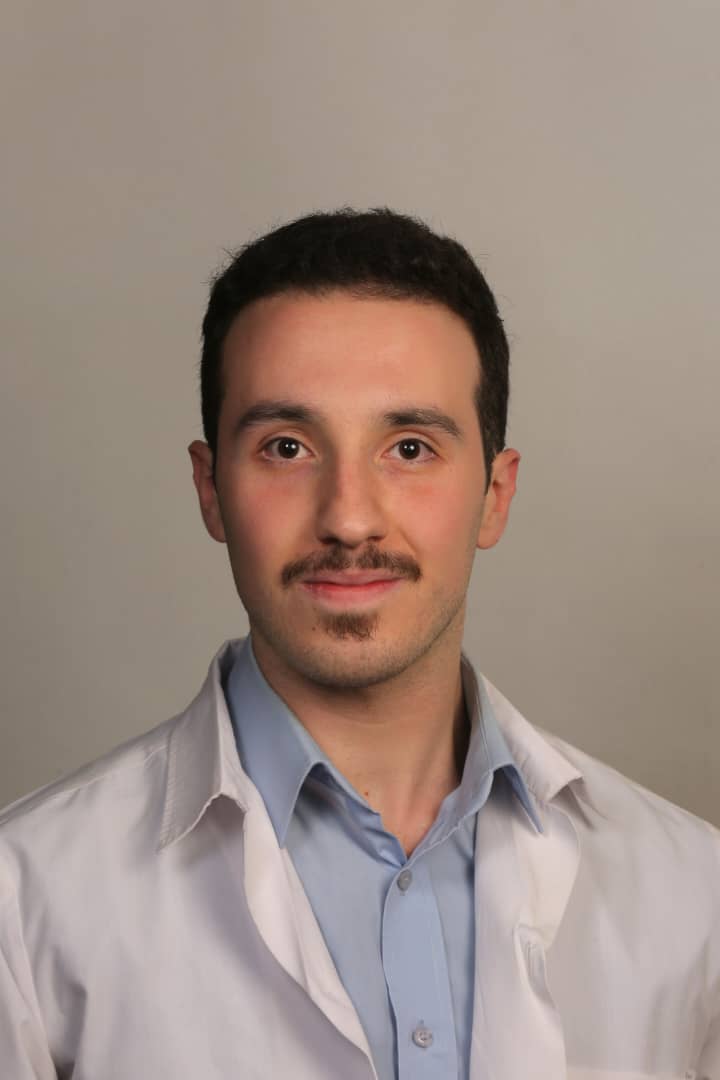
Salam, I'm
Rami Al Shaaban
A lifelong learner shaped by medicine and guided by curiosity, I strive to bridge clinical insight with population-level discovery and education — advancing early detection, equity, and ethical science.

A lifelong learner shaped by medicine and guided by curiosity, I strive to bridge clinical insight with population-level discovery and education — advancing early detection, equity, and ethical science.
Case Report: Progressive Osseous Hydatid Disease of the Femur and Ilium
I am preparing a clinical case report for journal submission documenting a rare, decade-long case of osseous hydatidosis (cystic echinococcosis) in a young adult from Syria. The report details relentless disease progression despite repeated surgical interventions and long-term antiparasitic therapy, culminating in management with an innovative dual-compartment drainage system (intraosseous + intramuscular) that preserved limb function.
This work underscores how neglected parasitic infections remain major challenges in endemic and conflict-affected regions—where delayed diagnosis and limited treatment access worsen outcomes. It also emphasizes the importance of surveillance, prevention, and treatment adherence in controlling zoonotic diseases that often remain underrecognized despite their burden. Beyond its clinical significance, the case highlights the biological complexity of host–parasite interactions and the need for novel palliative approaches when curative surgery is unfeasible.
By integrating detailed clinical documentation with global-health context, this project reflects my interest in bridging patient-level medicine with translational research and public-health strategy to address underrepresented diseases and improve equity in care.
Case Report: Novel NR0B1 Mutation in X-Linked Adrenal Hypoplasia Congenita
I am preparing a clinical case report for journal submission describing the first molecularly confirmed case of adrenal hypoplasia congenita (AHC) in the Middle East, caused by a previously unreported frameshift mutation in the NR0B1 gene. The study illustrates how rare genetic disorders can emerge in consanguineous families and underscores the importance of early recognition through genetic testing to guide timely treatment and family counseling.
Beyond expanding the global mutation spectrum of NR0B1, the report highlights the positive outcomes achievable through early corticosteroid and mineralocorticoid replacement, as the patient remained clinically stable and developmentally on track. It also contributes to global variant databases, refining genotype–phenotype correlations and improving diagnostic accuracy for future cases.
By connecting molecular genetics with clinical outcomes, this work reflects my broader goal of bridging precision medicine with population health to advance equity in diagnosis and care for underrepresented populations.
Cross-Sectional Study: Medical Maximizing and Health Equity in Post-Conflict Syria
I am conducting a cross-sectional study analyzing data from 390 adults across four major hospitals in Syria to examine the determinants of medical maximizing—the preference for more medical intervention, even when not clinically necessary. The results indicate that higher quality of life and younger age correlate with greater likelihood of maximizing, while lower educational attainment predicts reduced likelihood. Interestingly, cancer-related fear and worry were not significant drivers, emphasizing that socioeconomic resources rather than clinical need often shape healthcare utilization in fragile systems.
By highlighting how resource distribution, health literacy, and post-conflict recovery conditions interact to influence care-seeking, this study raises critical questions about health equity, sustainability of fragile health systems, and the global challenge of medical overuse. It contributes to a deeper understanding of patient decision-making under crisis constraints and supports evidence-based policy design and equitable allocation strategies for limited medical resources.
Cross-Sectional Study: Public Knowledge and Barriers to Thyroid Cancer Screening
I am contributing to a cross-sectional survey study (data collection ongoing) investigating public awareness, risk perception, and screening behaviors related to thyroid cancer. The project examines how individuals understand risk factors, early warning signs, and self-examination practices, as well as the barriers that limit access to screening and specialized care.
This work is especially significant in endemic and post-conflict regions, where the rising incidence of thyroid cancer intersects with healthcare access challenges. By analyzing knowledge gaps and structural barriers, the study aims to inform evidence-based education campaigns, screening guidelines, and early-detection strategies that connect patient awareness with timely clinical management.
My contributions include developing the study instrument, refining survey items, and coordinating data collection. In upcoming phases, I will also engage in data analysis and manuscript preparation for journal submission.
Cross-Sectional Study: Skin Cancer Awareness and Early Detection Practices
I am co-authoring a cross-sectional study (data collection ongoing) examining knowledge, attitudes, and preventive behaviors related to skin cancer among adults in Syria. Using a structured survey instrument, the project investigates sociodemographic influences on risk awareness, early sign recognition, and barriers to self-examination and clinical screening.
This research addresses an urgent need to understand public awareness and prevention behaviors in high-risk, resource-limited contexts, where delayed diagnoses and limited access to dermatologic care contribute to poor outcomes. By linking behavioral data with risk profiles, the study seeks to inform equity-focused prevention strategies and early-detection interventions aimed at reducing disease burden and improving survival rates.
My contributions include study design, questionnaire development, and coordination of survey administration. Once data collection is complete, I will participate in data analysis and manuscript preparation for journal submission.
Community impact efforts I’ve organized or supported
Launched support for ten tent-dwelling families living in unsanitary conditions by securing funding to provide solar lighting and mosquito nets—reducing vector-borne disease risk (e.g., leishmaniasis) and improving nightly safety and wellbeing. This project strengthened my appreciation for environmental health interventions that merge practicality with preventive impact.
Partnered with local supporters and fellow outreach volunteers to supply school backpacks and stationery to children from low-income families, helping them remain engaged in education. The initiative highlighted how educational access and health literacy reinforce one another in promoting long-term community resilience.
Co-organized a Ramadan initiative delivering food to families in need, later expanding its scope to include essential medications and infant formula for individuals with chronic conditions. By addressing both nutritional and pharmacologic needs, the project modeled an integrated approach to community-level public-health support in resource-limited settings.